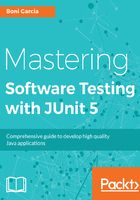
Testing types
There are two main types to carrying out software testing:
- Manual testing: This is the process of assessing the SUT is done by a human, typically a software engineer or the final consumer. In this type of testing, we can find the so-called exploratory testing, which is a type of manual testing in which human testers evaluate the system by investigating and freely evaluating the system using its personal perception.
- Automated testing: This is the process of assessing the SUT in which the testing process (test execution, reporting, and so on) is carried out with special software and infrastructure for testing. Elfriede Dustin, in her book Implementing Automated Software Testing: How to Save Time and Lower Costs While Raising Quality (2009), defined Automated Software Testing (AST) as the:
The main benefits of AST are: anticipated cost savings, shortened test duration, heightened thoroughness of the tests performed, improvement of test accuracy, improvement of result reporting as well as statistical processing, and subsequent reporting.
AST is most effective when implemented within a framework. Testing frameworks may be defined as a set of abstract concepts, processes, procedures and environments in which automated tests will be designed, created, and implemented. This framework definition includes the physical structures used for test creation and implementation, as well as the logical interactions among those components.
Strictly speaking, that definition of framework is not very far from what we can understand by library. In order to make the difference clearer, consider the following quote from the well-known software engineering guru Martin Folwer:

Frameworks are becoming more and more important in modern software development. They provide a capability highly desired in software-intensive systems: reusability. This way, large applications will end up consisting of layers of frameworks that cooperate with each other.